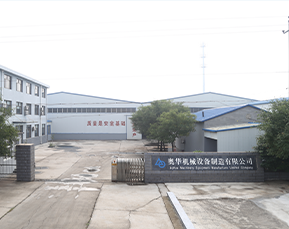 Afrikaans
Afrikaans  Albanian
Albanian  Amharic
Amharic  Arabic
Arabic  Armenian
Armenian  Azerbaijani
Azerbaijani  Basque
Basque  Belarusian
Belarusian  Bengali
Bengali  Bosnian
Bosnian  Bulgarian
Bulgarian  Catalan
Catalan  Cebuano
Cebuano  Corsican
Corsican  Croatian
Croatian  Czech
Czech  Danish
Danish  Dutch
Dutch  English
English  Esperanto
Esperanto  Estonian
Estonian  Finnish
Finnish  French
French  Frisian
Frisian  Galician
Galician  Georgian
Georgian  German
German  Greek
Greek  Gujarati
Gujarati  Haitian Creole
Haitian Creole  hausa
hausa  hawaiian
hawaiian  Hebrew
Hebrew  Hindi
Hindi  Miao
Miao  Hungarian
Hungarian  Icelandic
Icelandic  igbo
igbo  Indonesian
Indonesian  irish
irish  Italian
Italian  Japanese
Japanese  Javanese
Javanese  Kannada
Kannada  kazakh
kazakh  Khmer
Khmer  Rwandese
Rwandese  Korean
Korean  Kurdish
Kurdish  Kyrgyz
Kyrgyz  Lao
Lao  Latin
Latin  Latvian
Latvian  Lithuanian
Lithuanian  Luxembourgish
Luxembourgish  Macedonian
Macedonian  Malgashi
Malgashi  Malay
Malay  Malayalam
Malayalam  Maltese
Maltese  Maori
Maori  Marathi
Marathi  Mongolian
Mongolian  Myanmar
Myanmar  Nepali
Nepali  Norwegian
Norwegian  Norwegian
Norwegian  Occitan
Occitan  Pashto
Pashto  Persian
Persian  Polish
Polish  Portuguese
Portuguese  Punjabi
Punjabi  Romanian
Romanian  Russian
Russian  Samoan
Samoan  Scottish Gaelic
Scottish Gaelic  Serbian
Serbian  Sesotho
Sesotho  Shona
Shona  Sindhi
Sindhi  Sinhala
Sinhala  Slovak
Slovak  Slovenian
Slovenian  Somali
Somali  Spanish
Spanish  Sundanese
Sundanese  Swahili
Swahili  Swedish
Swedish  Tagalog
Tagalog  Tajik
Tajik  Tamil
Tamil  Tatar
Tatar  Telugu
Telugu  Thai
Thai  Turkish
Turkish  Turkmen
Turkmen  Ukrainian
Ukrainian  Urdu
Urdu  Uighur
Uighur  Uzbek
Uzbek  Vietnamese
Vietnamese  Welsh
Welsh  Bantu
Bantu  Yiddish
Yiddish  Yoruba
Yoruba  Zulu
Zulu High-Quality Conveyor Guide Rollers for Efficient Material Handling
Understanding Conveyor Guide Rollers Essential Components for Efficient Material Handling
Conveyor systems are vital for facilitating the movement of materials in various industries, from manufacturing to warehousing. One of the key components of these systems is the conveyor guide roller. These rollers are designed to support and guide the movement of conveyor belts and loads, ensuring that materials are transported smoothly and efficiently. In this article, we will explore the importance, types, and benefits of conveyor guide rollers.
The Importance of Conveyor Guide Rollers
Conveyor guide rollers play a crucial role in stabilizing and supporting the belt as it moves along the conveyor system. Their primary function is to maintain the alignment of the conveyor belt, preventing it from deviating from its intended path. This is particularly important in high-speed operations, where even slight misalignment can lead to product spills, increased wear, and potential damage to the equipment. Properly functioning guide rollers ensure that materials remain securely in place, reducing the risk of accidents and improving overall safety on the production floor.
Types of Conveyor Guide Rollers
There are several types of conveyor guide rollers, each designed for specific applications and environments
.1. Fixed Guide Rollers These are stationary rollers that are positioned along the conveyor belt to help guide the material. They are commonly used in applications where the conveyor operates on a straight path.
2. Adjustable Guide Rollers These rollers can be repositioned to accommodate different belt widths and configurations. They allow for greater flexibility in conveyor design and can be adjusted to ensure optimal belt alignment.
conveyor guide rollers

3. Self-Aligning Rollers These are innovative rollers equipped with mechanisms that automatically adjust the roller’s position to maintain proper alignment. They are particularly beneficial in environments where the conveyor system may be subjected to unexpected shifts.
4. Heavy-Duty Rollers Designed to handle larger loads and more demanding applications, heavy-duty guide rollers are constructed from robust materials that can withstand significant wear and tear. They are essential in industries such as mining, where the loads are particularly heavy and abrasive.
Benefits of Conveyor Guide Rollers
Utilizing conveyor guide rollers offers multiple advantages. First and foremost, they enhance the longevity of conveyor belts by reducing friction and wear. Proper alignment minimizes the chances of belt damage, leading to lower maintenance costs and prolonged equipment life.
Moreover, guide rollers contribute to improved efficiency. By ensuring that materials move smoothly and consistently along the conveyor system, these rollers minimize downtime and optimize production speed. In turn, this contributes to higher overall productivity within the facility.
Additionally, conveyor guide rollers can improve safety. With properly aligned belts, the risk of accidents caused by material spills or equipment malfunction is significantly reduced, promoting a safer working environment for all employees.
Conclusion
In conclusion, conveyor guide rollers are essential components of conveyor systems that enhance alignment, efficiency, and safety. By understanding their importance and various types, businesses can make informed decisions on their material handling processes. Investing in quality guide rollers not only improves the performance of conveyor systems but also ensures that operations run smoothly, ultimately contributing to a company’s success.
-
Revolutionizing Conveyor Reliability with Advanced Rubber Lagging PulleysNewsJul.22,2025
-
Powering Precision and Durability with Expert Manufacturers of Conveyor ComponentsNewsJul.22,2025
-
Optimizing Conveyor Systems with Advanced Conveyor AccessoriesNewsJul.22,2025
-
Maximize Conveyor Efficiency with Quality Conveyor Idler PulleysNewsJul.22,2025
-
Future-Proof Your Conveyor System with High-Performance Polyurethane RollerNewsJul.22,2025
-
Driving Efficiency Forward with Quality Idlers and RollersNewsJul.22,2025





























